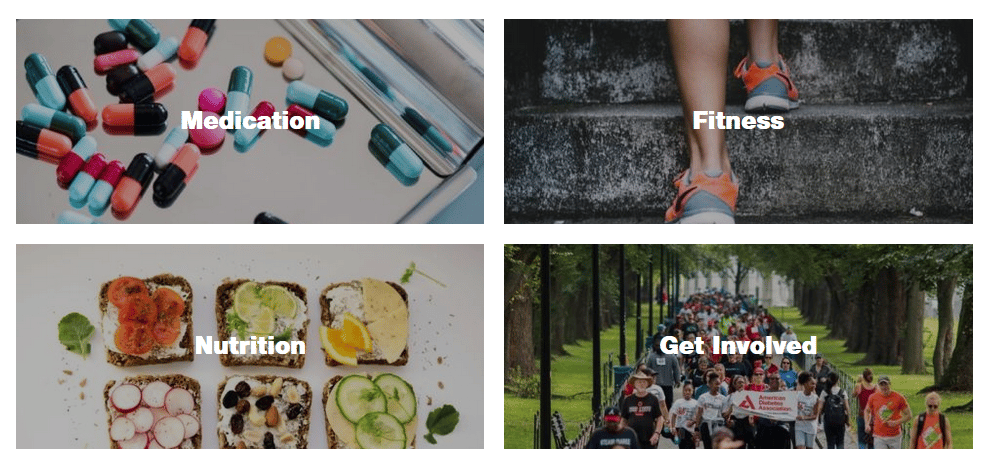If you have been diagnosed with diabetes, regardless of the type, you’re likely familiar with the American Diabetes Association (ADA). But what is this organization, and how does it aid those with diabetes?
The American Diabetes Association is a nonprofit entity focused on educating the public about diabetes. They offer support for individuals living with the condition by funding research aimed at managing, curing, and preventing diabetes, including type 1 and type 2 diabetes, gestational diabetes, and prediabetes.
Beyond funding research, the ADA also:
- Provides services to numerous communities
- Supplies objective and trustworthy information
- Advocates for the rights of those discriminated against due to diabetes
The Role of the American Diabetes Association in 2022
In 2022, the American Diabetes Association continues to be a significant force, supported by over 565,000 volunteers, their families, and caregivers. This includes a professional society comprising nearly 16,000 healthcare experts and more than 250 staff members.
The importance of the ADA is highlighted by recent diabetes statistics. According to 2019 data, 37.3 million Americans, or 11.3% of the population, were living with diabetes. Approximately 1.9 million Americans had type 1 diabetes, including 244,000 children and adolescents. Each year, 1.4 million U.S. residents are newly diagnosed with diabetes.
ADA’s Recommended Diet for Managing Diabetes
A well-structured meal plan is a powerful tool for managing both diabetes and prediabetes. The American Diabetes Association strongly emphasizes diet for effective condition management, advocating the Diabetes Plate Method. So, what exactly is the Diabetes Plate Method?
According to the ADA, the Diabetes Plate Method enables you to easily prepare perfectly portioned, balanced meals encompassing vegetables, proteins, and carbohydrates. This method is straightforward, eliminating the need for calculating, weighing, measuring, and counting sugar levels.
Here’s a simplified guide to the ADA’s Diabetes Plate Method to help you manage your blood sugar levels:
STEP 1: Fill half your plate with non-starchy vegetables.
Examples:
- Asparagus
- Broccoli or Cauliflower
- Brussels Sprouts
- Cabbage
- Carrots
- Celery
- Cucumber
- Eggplant
- Leafy greens like kale, collards, mustard greens, or Swiss Chard
- Mushrooms
- Okra
- Green beans, pea pods, snow peas, and sugar snap peas
- Peppers like bell peppers and hot peppers
- Salad greens like lettuce, spinach, arugula, endive, and other salad mixes
- Squash like zucchini, yellow squash, chayote, spaghetti squash
- Tomatoes
STEP 2: Fill one-quarter of your plate with lean protein foods.
Examples:
- Chicken, turkey, and eggs
- Fish such as salmon, cod, tuna, tilapia, or swordfish
- Shellfish like shrimp, scallops, clams, mussels, or lobster
- Lean beef cuts such as chuck, round, sirloin, flank, or tenderloin
- Lean pork cuts like center loin chop or tenderloin
- Lean deli meats
- Cheese and cottage cheese
STEP 3: Fill the remaining quarter of your plate with nutrient-rich foods.
Examples:
- Whole grains like brown rice, bulgur, oats/oatmeal, polenta, popcorn, quinoa, and whole grain products (bread, pasta, tortillas)
- Starchy vegetables such as acorn squash, butternut squash, green peas, parsnips, plantain, potato, pumpkin, and sweet potato/yam
- Beans and legumes such as black, kidney, pinto, and garbanzo beans
- Fruits and dried fruit
- Dairy products like milk, yogurt, and milk substitutes (e.g., soy milk)
STEP 4: Choose water or a low-calorie beverage.
Examples:
- Unsweetened tea (hot or iced)
- Unsweetened coffee (hot or iced)
- Sparkling water/club soda
- Flavored water or sparkling water without added sugar
- Diet soda or other diet drinks
Note: You can still utilize the plate method when preparing and portioning combo meals. Just list out the various ingredients in the meal and determine where they fit on the plate.
Guidelines from the American Diabetes Association
The American Diabetes Association publishes its Standards of Care annually, providing an update on the best practices for managing diabetes.
The ADA’s Professional Practice Committee (PPC) reviews current research and seeks input from expert contributors, updating these guidelines every January. The objective is to offer recommendations on diagnosing and managing diabetes to healthcare providers, researchers, insurers, individuals with diabetes, and their families.
This year’s updates concentrate on screening, preventing complications, leveraging technology, and personalizing diabetes care.
According to Dr. Robert Gabbay, the ADA’s chief scientific and medical officer, the science of diabetes care is continually progressing. With new advancements and insights emerging, the ADA is committed to sharing this knowledge with the public to ensure optimal care for individuals with diabetes.
